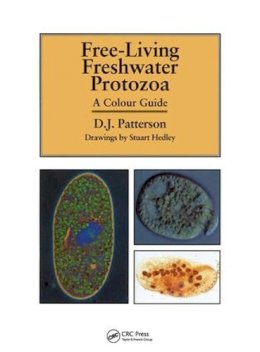
Stock image for illustration purposes only - book cover, edition or condition may vary.
Free-living Freshwater Protozoa
David J. Patterson
€ 81.29
FREE Delivery in Ireland
Description for Free-living Freshwater Protozoa
Paperback. This colour guide makes the identification of individual protozoa easily accessible to students and professionals and provides information on protozoan communities found in different environments by means of a wealth of colour photomicrographs supported by original and detailed line drawings and concise text. Num Pages: 223 pages, 431 black & white illustrations, 241 colour illustrations. BIC Classification: GBC; PSAB; PSG; PSPF; PSVS; PSVT. Category: (P) Professional & Vocational; (UP) Postgraduate, Research & Scholarly; (UU) Undergraduate. Dimension: 260 x 195 x 14. Weight in Grams: 678.
Protozoa may be found in almost every aquatic habitat, each containing dozens of species. The diversity can provide invaluable insights into the nature of the habitat. Protozoa can thus be used to illustrate biological principles.
This colour guide makes the identification of individual protozoa easily accessible to students and professionals and provides information on protozoan communities found in different environments by means of a wealth of colour photomicrographs supported by original and detailed line drawings and concise text.
The guide has been welcomed by professional practitioners, researchers and instructors, by graduate, undergraduate and secondary level students, ... Read more
Product Details
Format
Paperback
Publication date
1996
Publisher
Manson Publishing Ltd United Kingdom
Number of pages
223
Condition
New
Number of Pages
224
Place of Publication
London, United Kingdom
ISBN
9781874545408
SKU
V9781874545408
Shipping Time
Usually ships in 4 to 8 working days
Ref
99-2
About David J. Patterson
David J. Patterson, Professor of Zoology, University of Sydney, Australia.
Reviews for Free-living Freshwater Protozoa
The quality of the photographs is remarkable and they have been printed with care...a delight to read. —Environmental News An excellent book that fulfills a real need. Every amateur microscopist, biology teacher, and freshwater biologist should own a copy. —The Quarterly Review of Biology
